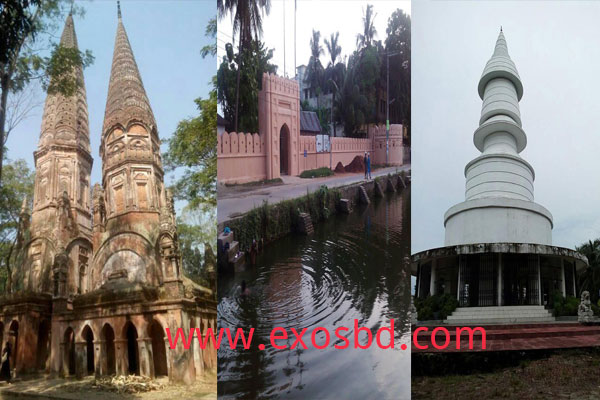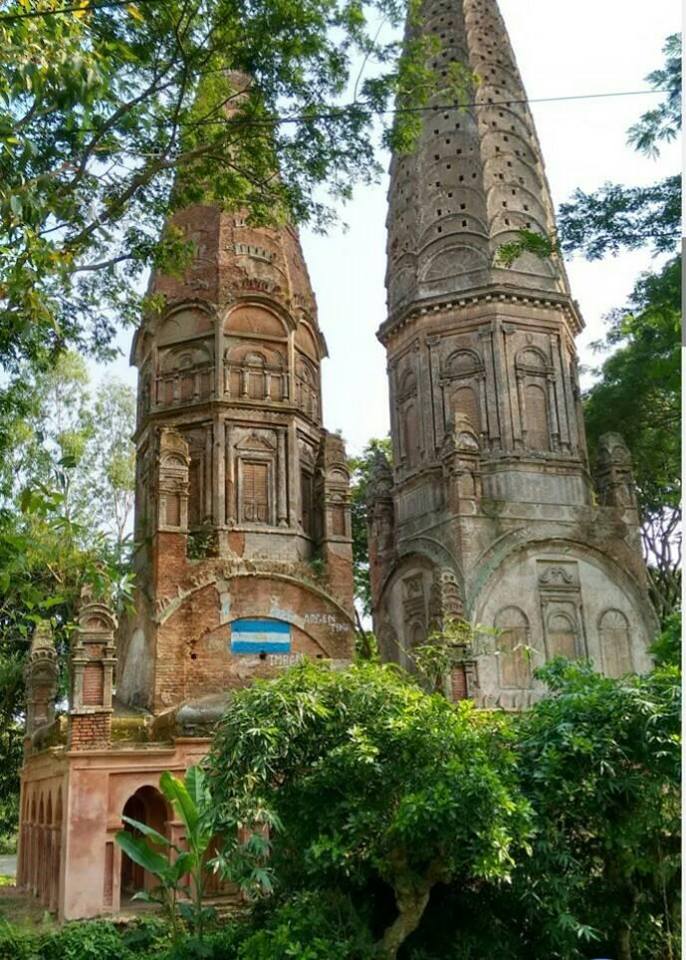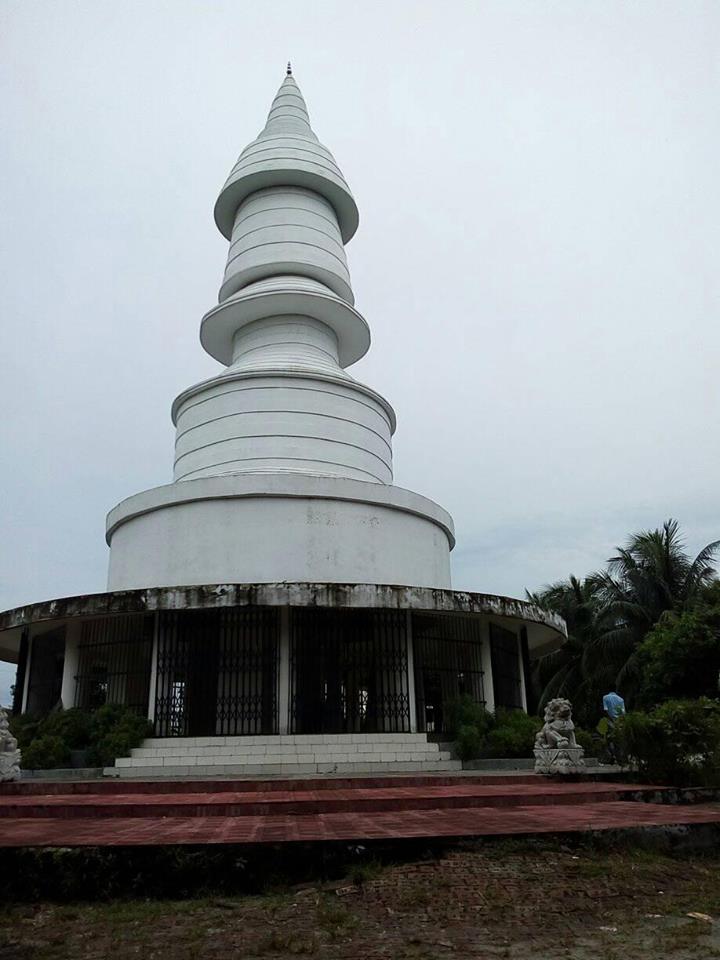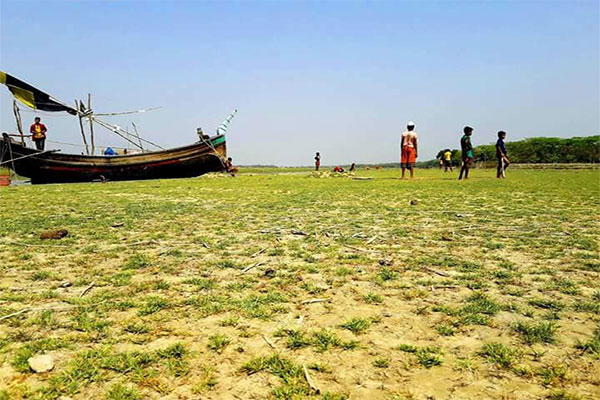Visit Tongibari The Heritage sites in Bangladesh

Visit Tongibari The Heritage sites in Bangladesh. There are many places to visit in Bangladesh and of course the most beautiful places is here.
If you are planning a day-trip to visit a few heritage sites close to Dhaka. Then make a trip to Tongibari, a part of the-then Bikrampur capital of Bengal. We managed to visit only three out of the dozens of heritage sites there.
Table of Contents
Tongibari The Heritage sites in Bangladesh
Today we will discuss about Tongibari and some nearest places where you can visit in one day. So let’s start the journey.

The Sonarang temples
The Sonarang temples are basically two temples, standing side by side on a single masonry platform. According to the Archeological Survey Report-2000, a man named Rupchandra had built the large Shiv temple in 1843. The smaller one, the Kali temple, was built in 1886.
The Kali temple
Kali Temple is decorated with snake heads on all sides. “There are so many snakes in this temple. If they come out, they can devour all the people of the country,” said a local man humorously. The locals also muse that there are hidden treasure chambers in sikharas—guarded by giant snakes.
While the Archaeological Department’s signboard warns people against damaging this heritage site. The twin temples are in need of maintenance as walls are peeling off.

Pandit er vita
Birthplace of Srigaan Atish Dipankar is a very commonly known place in Munshiganj District. Most of the people knows it by name mentioned at the beginning rather saying it house of Atish Dipankar. It’s located at the village Bojroyogini of Munshiganj Sadar. The place where he was born and grew up. The nourishment of his Mother ‘Provaboti’ and his Father ‘Kollansri’ is now a house built by someone named Latif Sheikh.
Srigan Atish Dipankar was a great master for spreading the knowledge of Buddha religion among the general people. He was appointed as a principal of ‘Bikromshila School’ (Now at Vagolpur of Bihar). During the reign of great Pala King ‘Mohipal’
Later, this great Saint of Buddhism migrated to Tibbot for practicing his meditation and expanded his religious knowledge.
Idrakpur Fort
Idrakpur Fort situated at Munshiganj proper, now on the west bank of the canal running through the town, and on the eastern vicinity of Deobhog village. This water fort was originally built at a strategic point on the junction of the river Ichhamati (now dried up) and the Meghna. The location of the fort had earlier been named as Idrakpur. The development of the township in the locality with the name Munshiganj is a later innovation. Still there is a village named Idrakpur in the suburb of the town. The surroundings of the fort are now filled with earth, and in some places the silt has risen up to the level of the parapet.
The erection of the fort was intended to check the advance of the Magh and Portuguese pirates proceeding towards the Mughal capital city of Dhaka. It was probably built by the Mughal subadar Mir Jumla in about 1660 A.D.
Read Also: Delicious special Pancake recipe with easy method
This brick-built fort, quadrangular in size, runs from north to south measuring 86.87 meter in length and 59.60 meters in breadth. It consists of two main parts: i) the wider open area surrounded by curtain walls crowned by machicolated merlons, with engaged rounded corner bastions also crowned by merlons and pierced by musketry, and ii) the smaller area containing a round drum of huge dimension surrounded by another series of similar curtain walls. An approach to the drum is provided from the bigger court.
The most striking feature of the fort is the existence of an elevated rounded platform of 32.5 diameter and 9.14 meter high on the eastern part of the fort, which can be reached by a staircase. Another striking feature of the fort is the existence of a staircase leading to an underground room at the foot of the drum. Tradition goes that the staircase is a part of the provision for an underground tunnel meant for emergency exit of its occupants to some safe destination. But virtually the staircase simply leads to a secret underground chamber which was the magazine or storehouse for arms and explosives.
The main entrance gate of the fort is on the north with a high rectangular bastion crowned by machicolated merlons which served as a guard room.
On the top of the drum of the fort is the residential quarters of the Deputy Commissioner, and the fort itself now serves as the jail. [Muazzam Hussain Khan]
Read Also: Know About Akash DTH Self care
How To Reach: Munshiganj District
There are several transport is available from Dhaka to Munshiganj. The bus services are “Nayan Paribahan”, “Dighir par Paribahan” and “Dhaka Transport”, all of the buses used to start from “Gulistan” of Dhaka. It will cost you 60-80 taka, and will require 1 hrs to 2 hrs bus journey depending upon the road traffic.
Also you can hire CNG auto rickshaw from the “Postogola”, and it will take you 250-350 to take you at Muktarpur bridge. Remember, if you are hiring CNG, make sure who will provide the toll of the bridge. For you information, the toll fee is 20 taka. So negotiate with the driver of CNG about who will provide the toll.
After Reaching Munshiganj Just take a Rikshaw or Auto taxi and reach the places or Tongibari.
If you need more information about Tongibari you can comment below on the Facebook comment box we will always help you with information.




